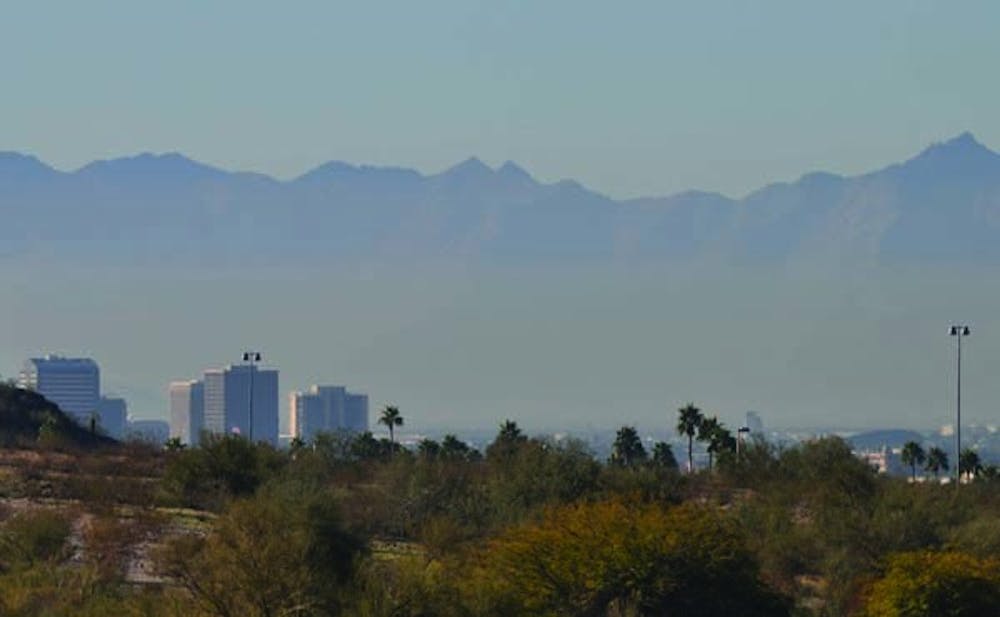The Environmental Protection Agency’s efforts to improve air quality throughout the Southwest could end up shutting down the coal-fired Navajo Generating Station serving Arizona, California and Nevada, eliminating jobs and impacting water prices significantly.
The EPA’s intention to reduce carbon dioxide emissions will likely either force the closure of the Navajo plant or require costly improvements that will translate directly into higher energy costs for the Central Arizona Project. The CAP distributes water throughout Arizona using 14 pumping stations and 326 miles of canals, according to the association’s website.
CAP depends on the Navajo plant for 100 percent of the energy it needs to pump water through the canals that stretch from Lake Havasu to south of Tucson, according to the website.
The “Clearing The Air” conference, held last weekend at ASU’s Sandra Day O’Conner College of Law, addressed the significance of this dilemma.
Speakers and participants, focused their attention on the Clean Air Act the EPA is using to regulate the emissions of carbon dioxide. The greenhouse gas is generally accepted as a primary contributor to global warming and reduced air quality.
Congress established the Clean Air Act in 1963 and the EPA in 1970. The act saw significant revisions in 1990. Today, it serves as the guide for the EPA’s regulation of air pollutants.
Arnold W. Reitze Jr., professor of law at the University of Utah, spoke about legislation to regulate carbon dioxide proposed recently that is “going nowhere.” Thus, the government is falling back on traditional pollution control regulations like the Clean Air Act.
Reitze said the act was never designed to regulate carbon dioxide. “We keep trying to jam the Clean Air Act into a role it was never intended to play,” he said.
An EPA list used for developing national air quality standards references six common air pollutants and an additional 183 hazardous air pollutants. Carbon dioxide, however, proves especially difficult because it doesn’t fit the definition for either category. But, it is so prevalent in the atmosphere. Carbon dioxide forms naturally when humans breathe and is produced when carbon-based fuels like coal are burned.
“The EPA is very clearly insistent on either cleaning up or shutting down Four Corners [Power Plant] and the Navajo Generating Station,” said Kristin Mayes, former chair of the Arizona Corporation Commission, Arizona’s utility regulatory agency.
Both the Four Corners and Navajo plants are located on Navajo tribal land. The Navajo Generating Station is one of six coal-fired power plants in Arizona.
Mayes added that one of the main challenges facing Arizona is deciding how to close coal-fired power plants in a fair, systematic and economically sensible way.
Mayes was chosen last December to head ASU’s newly created Program on Law and Sustainability at the Sandra Day O’Connor College of Law. The program is a partnership with ASU’s Global Institute of Sustainability and will focus on both law and policy as they relate to energy, the environment and the economy.
Doug Miller, general counsel for the Central Arizona Project and another of the event’s speakers, said CAP’s dependence on the coal-fired Navajo Generating Station for its energy needs creates significant uncertainties in light of the EPA’s effort to improve air quality.
Miller added that there are more than 500 Navajos employed at the Navajo plant. Each job supports two or more Navajo families.
If the plant did shut down because of an inability to make the EPA-required improvements, it would hit the Navajo community very hard, Miller said. The impact on water costs to all Arizonans would be big, he added.
Miller indicated in his conference presentation that if the Navajo plant were shut down and replacement power had to be purchased, Arizona’s water rates could double or triple because of the higher cost of energy.
Colin Tetreault, a faculty associate at ASU’s School of Sustainability and conference attendee, said that water in Arizona is undervalued in comparison to other parts of the country.
“You can, on average, move from Michigan to Arizona and your water bill will go down,” Tetreault said.
Reach the reporter at cbleone@asu.edu.





